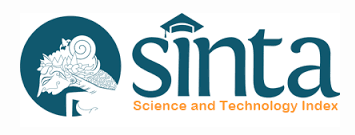STRATEGI DAN EFEKTIVITAS KOMUNIKASI CSR PT. VALE INDONESIA (TBK) DALAM PEMBENTUKAN OPINI PUBLIK
Abstract
Public opinion is an opinion, idea, or idea issued by internal or external public parties of an organization or company regarding an issue that arises. The internal or external public party obtains information about a matter either face to face or through the mass media. The creation of public opinion that develops in both internal and external public circles can assist companies in evaluating work programs in achieving the company's vision, mission, and goals. Public opinion is formed and is positive due to the existence of an effective communication process. The objectives of this study were to identify the strategies undertaken by PT. Vale Indonesia Tbk. in building communication effectiveness. The location of this research was carried out in East Luwu District, South Sulawesi where the company operates. The research method used is a survey method with quantitative data supported by qualitative methods (Mixed method). The technique of determining respondents through the method of sampling Morgan and Krejci. The determination of informants was carried out using the snowball technique. The data obtained were analyzed quantitatively and qualitatively. Quantitative data analysis will be presented in the form of frequency tables and cross-tabulations, then qualitative data will be processed through three stages of analysis, namely data reduction, data presentation, and conclusion drawing. The results showed that the communication strategies and methods used in forming public opinion about the existence of the company and corporate social responsibility for the community were quite effective. So that a more optimal communication strategy is needed in order to create positive public opinion for both the company's existence and corporate social responsibility in the social, economic, and environmental aspects effectively.
References
Cutlip, Scott M, Atlen II, Center, and Gllen M, B. (2005). Effective Public Relation, Merancang dan Melaksanakan Kegiatan Kehumasan dengan Sukses (8th ed.). PT. INDEKS Kelompok Gramedia.
Effendy, O. U. (2002). Hubungan Masyarakat: Suatu Studi Komunikologis. PT. Remaja Rosdakarya.
Retno, S. A. (2001). Efektifitas Komunikasi Organisasi Pelaksana Program Kredit Usaha Tani (Kasus Kabupaten Cianjur). Institur Pertanian Bogor.
Rumanti, M. A. (2002). Dasar-Dasar Public Relation: Teori dan Praktik. PT. Gramedia Widiasarna Indonesia.
Ruslan, R. (2004). Etika Kehumasan, Konsepsi dan Aplikasi. PT. Raja Grafindo Persada.
Aminah, A. (2019). Peran Media Sosial “Facebook” Dalam Proses Pembentukan Opini Publik Menjelang Pemilihan Umum Legislatif 2019 Di Kabupaten Aceh Jaya. SOURCE : Jurnal Ilmu Komunikasi, 4(2), 1–14. https://doi.org/10.35308/source.v4i2.918
Muhammad, A. (2009). Komunikasi Organisasi. PT. Bumi Aksara.
Seha, 3. Nur Nadhirah. (2004). Penaggulangan Kemiskinan di Perkotaan (Kasus pada KSM di Kelurahan Loji, Kota Bogor, Jawa Barat). Institut Pertanian Bogor.
Tarahan, P., & Lampung, B. (2016). Интегрированные Маркетинговые Коммуникации И “Public Relations.” Новый Университет. Серия «Экономика И Право», 12 (70), 174–189.
Tubbs, S. L. and S. M. (1996). Human Communication: PrinsipPrinsip Dasar, Buku Pertama, diterjemahkan oleh Dedy Mulyan. PT Remaja Rosdakarya.
Wibisono, Y. (2007). Membedah Konsep dan Aplikasi CSR (Corporate Social Responsibility). Fascho Publishng.
Widiastuti, T. W. (2017). Analisis Elaboration Likelihood Model Dalam Pembentukan Personal Branding Di Twitter. Jurnal ASPIKOM, 3(3), 588. https://doi.org/10.24329/aspikom.v3i3.107
Once an article was published in the journal, the author(s) are:
granted to the journal right licensed under Creative Commons License Attribution that allows others to share the work with an acknowledgment of the work's authorship. permitted to publish their work online in third parties as it can lead to wider dissemination of the work. continue to be the copyright owner and allow the journal to publish the article with the CC BY license receiving a DOI (Digital Object Identifier) of the work.





